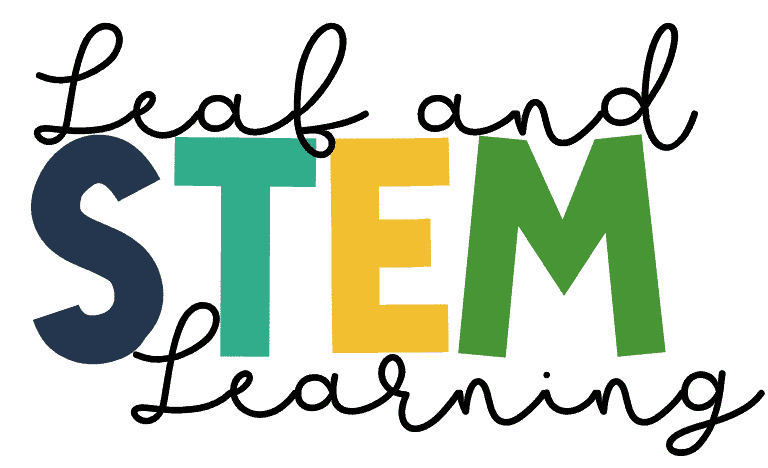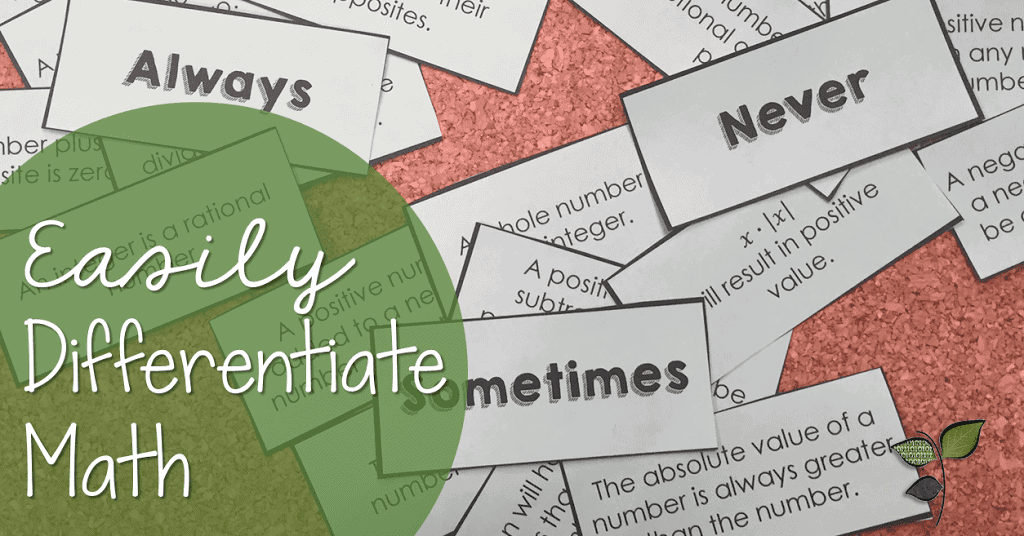True and false questioning is probably not what pops into your head when you think about a differentiated and rigorous math activity. The most plain of all question types really can become a thought provoking and multi-level activity that you can use with almost any topic in your math curriculum.
The Set Up
 |
Begin by thinking of statements that are always true, sometimes true, or never true for the topic you want to cover. Grab a free set of cards to go with an integer lesson by clicking the image to the right! A simple way to create this is by creating a word document with a table with three columns and as many rows as can fit on the page. Type statements in each of the cells. By using a three columned table, you can make sure you have a good mix of each type of statement: type the “always true” statements in the first column, the “sometimes true” in the second column, and the “never true” in the last column. It is okay if there are not equal amounts of each type, but having a variety keeps the activity more interesting. When writing the statements, write about vocabulary, algorithms, mathematical rules, and even equations or expressions to simplify. Before having the students do the activity, cut apart the statements, mix them up, and place in an envelop or bag to organize the cards for the students.
Let’s Differentiate!
Starting out easy…
- Sort the cards before passing them out. Give each student or group just one type of cards. Have the students read through the cards and decide whether the their set is the always true set, the sometimes true, or the never true set.
- Give students only “Never” cards. Ask them to determine what in the statement makes it false.
- With the whole set of shuffled cards, have the students sort them into categories with the titles “Always”, “Sometimes”, or “Never.”
Take it farther…
- Use the never true only cards again. This time have the students rewrite the statement to make it into a true statement.
- Have the students use the sometimes true statements. For each statement have them determine a time when the statement is true and an example of when the statement is false. They can write or draw an illustration explaining their choices.
Really challenge them!
- With the statements on the always true cards, have the students prove why the statement is always true using mathematical rules, examples, and illustrations. This is often more challenging than it seems since a really deep understanding of the concept is needed more to prove and answer true than false. To prove something false you need only one example!
- Have the students add to the set with their own statements. Have the students write some addition examples of always true, sometimes true, and never true statements. Have the student justify why it is in the category and debate with other students.
After reading this, do you have some more ideas of how to use “Always, Sometimes, Never” cards? I would love to hear about it!
Also look at the links below to keep reading from some of my colleagues for more differentiation tips for the middle school math classroom.







3 thoughts on “Differentiating True and False Questioning for the Math Classroom”
Neat idea! I like how you've suggested a tiered system so that all students can feel successful at their appropriate level of challenge. 🙂
Really clever! I love this, and you're right. I would not have thought of this as a way to differentiate. Definitely will try it out.
Thanks for sharing.
Cheers,
DocRunning
I LOVE always, sometimes, or never true activities – I use them often in my classroom! They really push students to think. Great post!